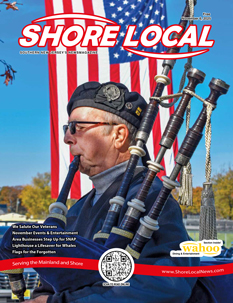By Sarah Fertsch
Staff Writer
If you’ve driven down either the New Jersey or Pennsylvania turnpikes, you’ve encountered the “drive now, pay later” digital payment structure applied to tolls. This usually isn’t a problem because 90% of drivers currently use E-ZPass.
For drivers in South Jersey, you can use E-ZPass to pay the toll to cross the five toll bridges that connect Cape May County’s beach towns along the beautiful Ocean Drive. But for the remaining 10% who still pay with cash and coins, that will change soon.
Starting in 2025, the Cape May County Bridge Commission is planning to switch to an all-electronic toll system, meaning cash and coins will no longer be accepted. Kevin Lare, the commission’s executive director, says they’re aiming for the first quarter of 2025, but haven’t nailed down an exact date yet.
“It’s going to happen. It’s just a question of when,” Lare said. The goal is to roll it out early in the year, so there’s time to fix any issues before the busy summer season kicks in.
The commission operates five bridges along Ocean Drive: Ocean City-Longport, Townsend’s Inlet, Corson’s Inlet, Middle Thorofare, and Grassy Sound.
They introduced E-ZPass on all of them back in 2018 to make life easier for drivers – no more hunting for cash or fishing out coins. At the time, you could still pay with cash or even use discount tickets.
The commission stopped selling those discount tickets in 2018, but they’re still valid if you happen to have any lying around. They used to cost $1.20 – a steal compared to the current $2.50 toll.
Speaking of those discount tickets, Lare said the commission will put together a plan to buy back any remaining tickets once the all-electronic system is in place. They don’t know exactly how many tickets are still out there, but it’s not a lot. “We get so few of them anymore,” Lare said.
The move to a cashless system follows a larger trend in the region. The Atlantic City Expressway is also going cashless in 2025, aiming for a Memorial Day weekend start, and the Garden State Parkway and New Jersey Turnpike are thinking about it, too, although they haven’t set any dates.
For those already using E-ZPass, nothing will change. If you’re not using it, no worries; you’ll just get a bill in the mail. When your car crosses the bridge, the E-ZPass cameras will snap a photo of your license plate, and an invoice will be sent to the registered owner.
Lare made it clear they want to make this process as painless as possible. Drivers will have 30 days to pay the toll, but there will be a small administrative fee if you’re late. Currently, there’s a $50 fee for unpaid tolls in New Jersey, but hopefully, you won’t let it come to that.
As for the toll rates, it’s still $2.50 to cross the bridges. In 2022, the commission approved a three-phase toll hike to help maintain its aging bridges – most of them were built in the 1930s and 1940s.
They’ve already raised the toll by 50 cents in both 2022 and 2023. There was supposed to be another 50-cent hike in 2024, but they held off to encourage tourism. Whether they’ll raise it in 2025 is still undecided.
In 2023, the five bridges saw nearly 2.1 million vehicles and generated $4.9 million in toll revenue. Once the cashless system is in place, there will no longer be a need for the 35 part-time toll collectors who currently staff the bridges. Lare said they will do their best to redeploy as many of them as possible as bridge tenders – the folks who operate the drawbridges for boat traffic.
Four of the five bridges: Townsend’s Inlet, Corson’s Inlet, Grassy Sound, and Middle Thorofare – are old-school drawbridges, which still need to open for boats. Lare pointed out that bridge tenders are required 24/7 by U.S. Coast Guard regulations to keep boat traffic moving smoothly.
So, if you’re one of the few still using cash or those old discount tickets, now’s the time to switch over to E-ZPass before the big change hits.









